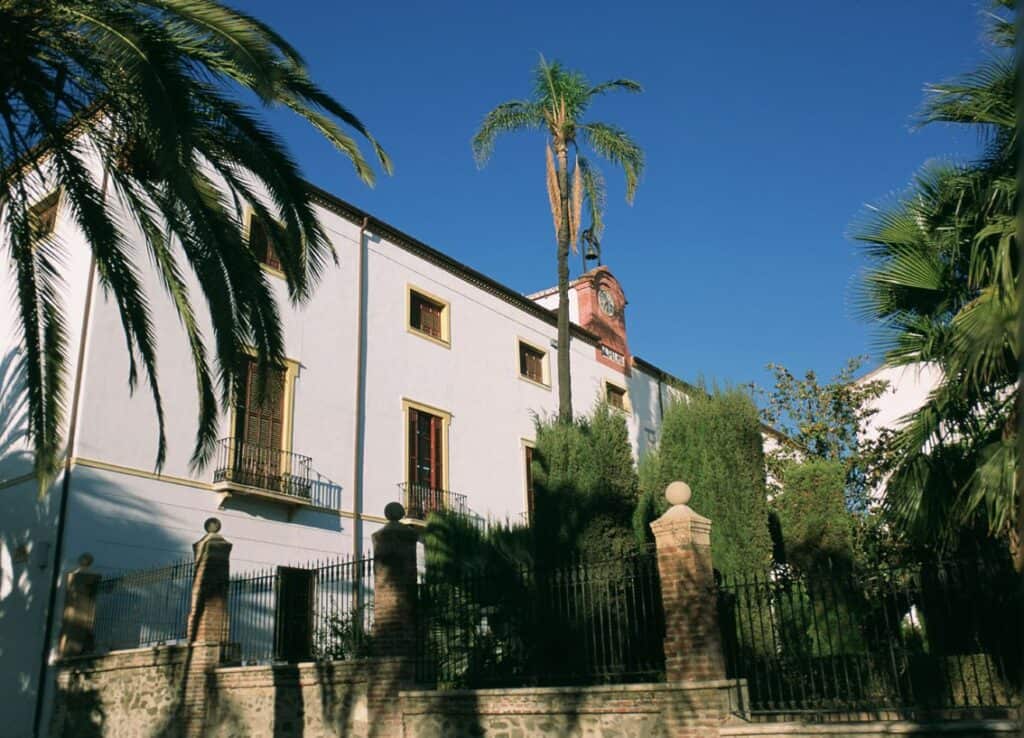- Home
- Listings
- Things To See & Do
- Car Hire
- News
- Properties
- What’s On
ES
Casa de la Palma
Casa de la Palma: A Historic Landmark and Cultural Hub in Motril
When speaking about the most outstanding buildings in Motril, one immediately thinks of La Casa de la Palma. This imposing building nowadays marks a cultural centre, as it houses the Campus of UNED, the Municipal Public Library, and the Municipal Archive of Motril. It is also home to the Preindustrial Sugar Cane Museum, which showcases the rich history of sugar production in this city. But more than its present uses, the Casa de la Palma has quite a remarkable history, tracing back to the 16th century, influenced by the sugar industry and historic events that happened in the region.
The Origin of the Building: A Sugar Mill in the 16th Century

The Casa de la Palma is directly linked to the origins of Motril’s sugar industry. During the 16th century, on the outskirts of the city, Jerónimo Cebtini-a Morisco-built a house and set up a sugar mill. This was one of eleven mills in Motril and was an essential part of the local economy, as sugar production was one of the region’s main economic drivers.
After the Morisco uprisings and their expulsion in 1570, the Crown confiscated the properties of the Moriscos, including their sugar mills. The mill of Jerónimo Cebtini was seized by the Crown and sold at auction in 1579 to Juan de Deza. Later on, a Genoese merchant named Lucas Palma acquired the property. From then on, the building and its grounds became known as the Casa de la Palma, in honor of its new owner.
The Ownership of the Victoria Family and the Clock Tower
Casa de la Palma had changed hands several times in centuries. By the mid-17th century, it fell to the lot of the Victoria family, who resided there until the middle of the 19th century. During this period, the house was extended; besides that, several renovations were performed. One of the more striking additions was a mid-19th-century clock tower built into the façade’s center, which gave it the popular name “Casa del Reloj de Victoria”.
The clock tower became the symbol of the building, and the Casa de la Palma assumed an aristocratic character with its large size and architectural design. The structure of the building remains impressive, its “U” shape framing a large central courtyard, and several annexes were added at the back of the building. These annexes, which once served as storage, stables, and servants’ quarters, now form part of the cultural complex housing the Casa de la Palma. The interior features also a garden with specimen of plants and trees brought from the Americas and acclimatized here more than a hundred years ago.
The House During the French Invasion
The Casa de la Palma also has an important connection to the military history of this region. During the French invasion in the early 19th century, between 1810 and 1812, Motril became a key strategic point for the invading army, which controlled the entire coast and the Alpujarra. During this period, the Casa de la Palma was used as a prison for the men captured during the occupation.
The Interior Garden
Inside the Casa de la Palma, there is a peaceful garden that invites visitors to relax. Accessible from both the building’s rooms and the Preindustrial Sugar Cane Museum, this garden is adorned with an impressive palm tree that crowns it, giving it a distinctive touch. The space is divided into two levels, with different plant pots housing a wide selection of plants that add color and freshness. The distribution of plant species maintains the character of the original patio, as it was designed by the Palanco Burgos family, former owners of the building.
Inside this small oasis at Casa de la Palma, one can take a rest on the benches, admire the flowers, and enjoy reading a book or simply the serenity of the spot. The garden is, no doubt at all, a perfect complement to the visit of the building and its museums-a complete journey through history, culture, and nature.
Current Use

Nowadays, the Casa de la Palma has been restored and is being used as a cultural centre with several activities and services supporting the community. Among others, it is the headquarters of the Preindustrial Sugar Cane Museum, the campus of the UNED in Motril, the Municipal Public Library, and the Municipal Archive of the city. These cultural spaces allow the residents and visitors of this city who wish to learn more about its history to access different kinds of education and culture.
The building also features two spaces dedicated to culture and exhibitions: the “Pedro Victoria” Exhibition Hall and the “Francisco Palanco” Auditorium. These rooms host temporary exhibitions, conferences, presentations, and other cultural events to enable the community to enjoy a broad range of artistic and educational activities.
How to Get There
The Casa de la Palma is located at Calle Marquesa de Esquilache, number 4, in the center of Motril.
